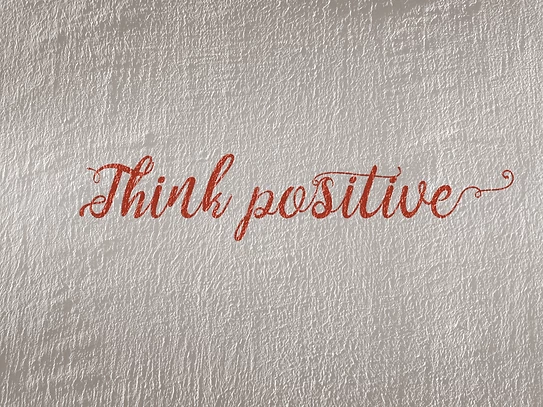Stress, put simply, is our body’s reaction to any change that requires an adjustment or response.
We all experience stress. Every single day of our lives.
——
Your stomach rumbles. (signaling a change)
You go to the refrigerator and begin to make your lunch. (your response to the change)
You eat. Stomach stops rumbling. (stressor resolved)
Your alarm goes off, blaring loud beeps into your ear. (signaling a change)
You roll over and turn off the alarm. (your response to the change)
The blaring beeps stop. (stressor resolved)

——
These are examples of acute stressors that have logical, quickly achieved solutions and temporary, non-problematic effects on the body. However, when we experience more complicated stressors, without straightforward resolutions, including experiencing something new or unexpected, our bodies react in ways that can affect our health and well-being. These stressors could range from something like our dinner plans getting changed at the last minute to a global pandemic like COVID-19. When these stressors are perceived as threatening to our identity or our sense of control, they are more likely to cause of feelings of distress. Distress can negatively affect our quality of life, decrease our ability to fight off infections, and even increase our risk of developing chronic health conditions like high blood pressure and heart disease.
While a little stress is actually a good thing because it helps to signal us to take action (Eat! Wake up!), too much stress wreaks havoc on our well-being. For people with neurologic conditions, stress can show up in the body as a worsening of symptoms. In Parkinson’s Disease, too much stress can worsen tremor, freezing of gait, and dyskinesia. It can even decrease the effectiveness of dopamine replacing medication.
The bad news is that feeling stressed is inevitable. There are little things and big things that will come up and cause us to feel frustrated, anxious, and vulnerable.
The good news is that we have the power to lighten up the way stress is perceived by our brains and to strengthen our ability to maintain our mental health despite adversity. This is called building resilience. Resilience allows us to diminish the negative impact of stress on our physical state, mood, and outlook on life
Here are my top 10 tips for stress management (in no particular order):
Tips to Battle Stress and Strengthen your Resilience Shield
1. Prioritize Sleep: A restful night’s sleep equips you to handle life’s obstacles with more clarity and ease. Aim for 7-8 hours every night. Check out our Sleep: Your Superpower blog for more tips.
2. Hydrate: Dehydration increases the amount of cortisol, our fight or flight hormone, in the body, which contributes to increased levels of perceived stress. Dehydration also prevents our organs from working efficiently, stressing them as well. Unless you have any medical conditions that would be worsened by altering fluid intake, a good rule of thumb is to aim to drink half of your body weight in ounces of water each day.

3. Exercise: It’s no secret that exercise is a mood booster and it can also significantly reduce stress levels by increasing endorphins, our brain’s ‘feel good’ neurotransmitters. If you don’t have a regular workout routine, a walking program is a simple way to start. Start with an easy pace for 10 minutes per day and gradually increase both your walking time and speed as you are able.
4. Socialize: Human beings are social by nature and we have a fundamental need to maintain positive relationships. Socialization boosts dopamine and oxytocin in our brains and reduces cortisol, helping us to feel connected and supported through life. In-person interactions are best, but if this is not feasible, pick up the phone and call an old friend or hop on a FaceTime call with your grandchildren as the next-best thing. Try joining an online community, like the Thrive Community Online, where others are going through similar experiences. This is a great way to find helpful suggestions to get through rough patches and feel less overwhelmed.
5. Enrich your Environment: Environmental Enrichment is the practice of altering your physical and social surroundings to create interest and a richer sensory experience that will increase the stimulation of your brain. The opposite of this, staring at the same four walls, watching the same TV show, and following exactly the same schedule every day, can not only be depressing, it can also promote “cognitive inflexibility,” which leaves your brain less able to problem solve and adapt to new situations. Seeking opportunities to learn a new skill, meet new people, or even changing your normal walking route can stimulate your brain and enable you to manage stress more adeptly.
6. Eat Well: Nourish your body with highly nutritious foods. Avoid foods that are high in sugar – they cause blood sugar levels to spike, requiring an increase in cortisol, which can increase feelings of anxiety and tension. Check out our Food to Help you Feel Good blog for more information on making great food choices to reduce oxidative stress and keep your resilience shield strong.
7. Practice Gratitude: A daily thankfulness practice is one of the best ways to shift focus off of negative thoughts and highlight the positives, redirecting our attention to what brings us joy. One of my favorite sayings is “Energy flows where our attention goes.” When we focus our attention more deeply on bringing the good in our lives to the surface, the negative stuff doesn’t feel quite so heavy. Gratitude practices can be simple and can take almost no time and still have a tremendous payoff. Here are two easy examples: First, grab a notebook, and each morning write a list of things you are grateful for in that moment. These can be literally ANYTHING and the list can be as long or short as you’d like. The next practice is to reflect on one positive thing that happened during your day and say it aloud. In our house, we take turns doing this at the dinner table each evening as a reminder that no matter how hard our days are, there is always something or someone to be grateful for.
8. Breathe Deeply: Breath is one of our most powerful tools to tap into our inner peace and calm at any time, but especially during times of stress. There are many breathing practices to explore, but I would suggest simply starting with becoming aware of your breath when you are feeling overwhelmed, anxious, or worried. At these times our breathing can become quick and shallow, reinforcing the physical symptoms of stress. Instead, take a moment to slow down and deepen your breathing, focusing on filling up your lungs with fresh, oxygenated air. When you exhale, envision you are exhaling the negative feelings you are experiencing. I also recommend a technique called “Box Breathing.” For a 3-minute audio instruction and practice in box breathing, click here.

9. Meditate: Some people find the concept of meditation intimidating because it sounds much more complicated than it needs to be. My favorite way to think of meditating is simply sitting peacefully with your eyes closed. You can do this! Anyone can meditate, and you can do it literally anywhere. You don’t need a fancy shrine with candles and crystals and you don’t need to identify this practice with anything other than clearing space in your head. To begin, sit or lie somewhere comfortably, close your eyes, and listen to this guided meditation that I made for you.
10. Positive Mindset: Another one of my favorite sayings that I try to live by is “Our thoughts create our reality.” The thoughts we think influence our feelings and our actions and therefore sculpt the world around us. It can be easy to get caught in negative thought loops that can exacerbate stress responses and make us feel badly, but we can combat this. It can be helpful to identify recurring negative thoughts and reframe them into a milder tone or, even better, put a positive spin on them. For example, rather than complaining to your spouse that you are sick of the rainy weather and it’s making you feel tired and want to hibernate for 6 months, try instead saying something like, “It’s rainy again, but at least it’s not snowing and everywhere are signs of spring that make me feel hopeful for sunnier days when I will feel more energized.” Doesn’t that feel better?
Another great way to create a positive mindset is to choose an expression or affirmation and say it out loud in the mirror 10 times every morning. Think about how you want to feel, what you want to create, and how you’d like to show up and use that energy to create your own personal phrase OR try one of these on for size and see if it’s right for you:
“I am strong and capable.”
“I can handle whatever comes up today.”
“There are opportunities all around me to experience joy.”
“Today is going to be a good day!”
“I feel supported and energized.”

You are now armed with an arsenal of stress reducing, resilience boosting tools to help you feel better and live an abundant life! While 10 things may seem like a lot, especially if this is new information to you, there’s no need to try to implement them all right away. I challenge you to choose 2 of these tips that resonate with you most deeply and get started with them this week! Pay attention to how the strategies make you feel over the next few weeks and let us know how it’s going! Consistency is the key to results, so try to incorporate these strategies on a daily basis for a few weeks in order to realize their full effect. If you have your own stress busting tool box, please share your methods with us as well!
Sending you positive thoughts and stress shielding strategies,
Ashley







